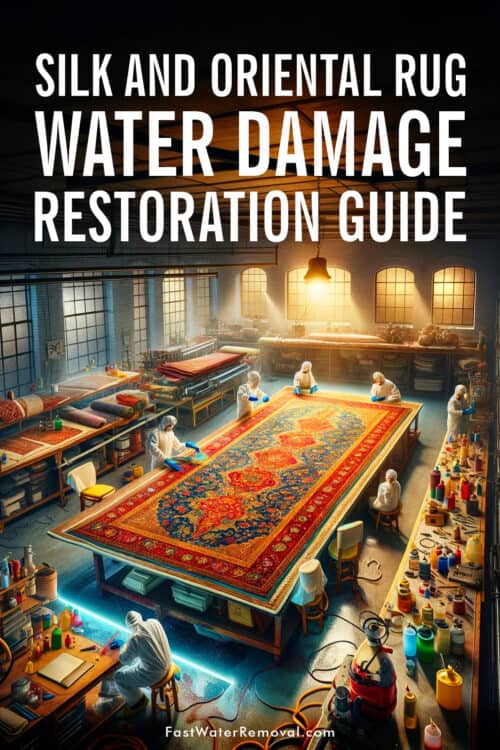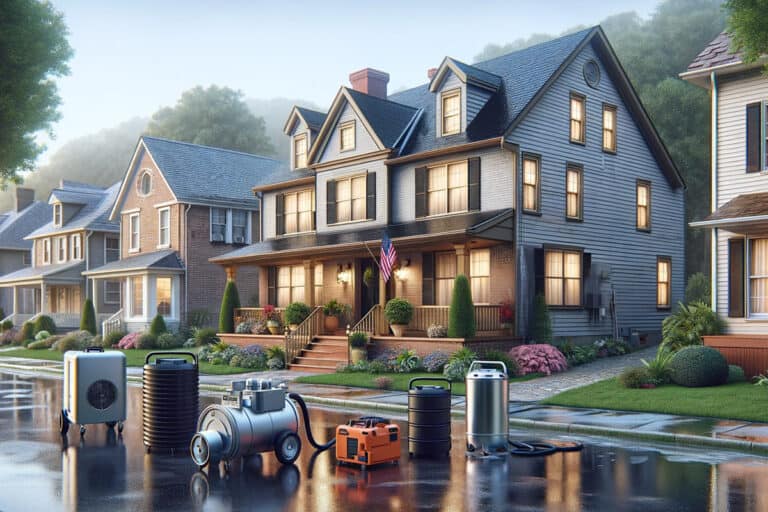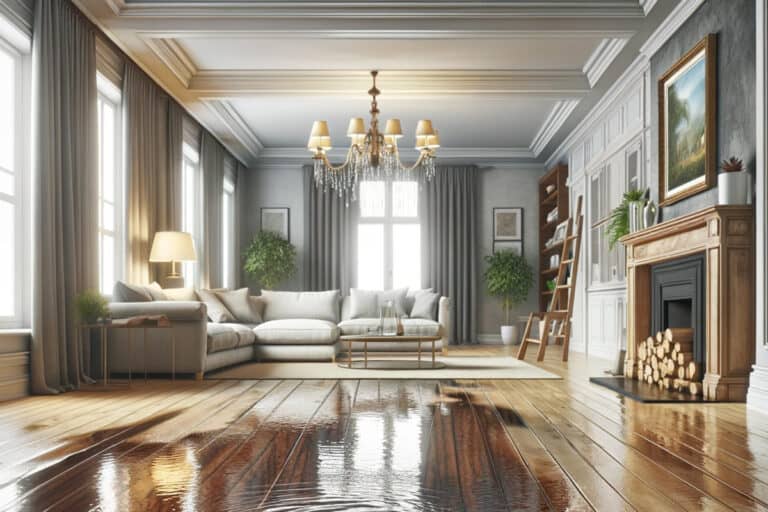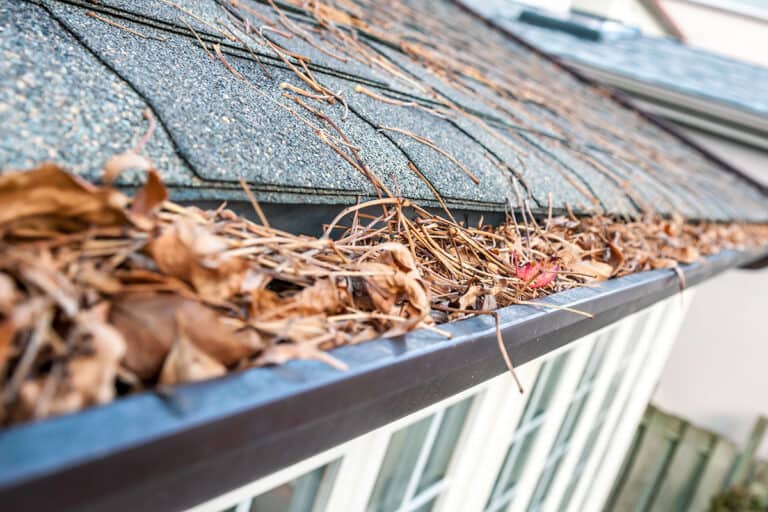Disclosure: I am compensated for purchases made through some links on this site. Click for details.
Water damage to silk and oriental rugs can result in significant structural and aesthetic harm due to their delicate fibers and often intricate designs. When a rug of this caliber becomes waterlogged, immediate and careful action is necessary to mitigate the damage. Understanding the intricacies of the material, the type of damage incurred, and the appropriate restoration techniques is paramount in preserving the value and beauty of these textiles.
Initiating a preliminary damage assessment as soon as possible allows for proper planning of the restoration process, tailored specifically to silk and oriental rugs. The process may involve a range of repair techniques and restorative detailing, adapted to the unique characteristics of each rug. Professionals skilled in rug water damage restoration can employ these methods to rejuvenate and preserve the rugs, often restoring them to their pre-damage state.
Considering the complexities of rug restoration after water damage, handling the situation with insurance and estimates becomes a key part of the restoration journey. Knowledge of preventative measures and an understanding of the rug’s value, before any issues occur, can help owners maintain their rugs and manage the restoration process more efficiently if damage does take place.
Key Takeaways
- Immediate action and knowledge are crucial for water damage restoration of silk and oriental rugs.
- Tailored restoration techniques ensure the preservation of the rug’s structure and aesthetics.
- Proactive rug care and understanding of value can simplify dealing with unexpected water damage.
Understanding Water Damage
Water damage can occur from a variety of sources like flooding or plumbing issues, undermining the integrity of silk and oriental rugs through mold, mildew, and structural damage. It’s crucial to approach water damage restoration knowledgeably to preserve these valuable textiles.
Types of Water Damage
Clean Water: This type of damage comes from sanitary sources, such as supply lines or falling rainwater. Although seemingly harmless, if not addressed promptly, clean water can escalate into more serious types or spur mold growth.
Grey Water: Refers to wastewater that isn’t sewage but may contain contaminants. These can originate from overflowed washing machines or dishwashers, affecting silk and oriental rugs with chemical or biological pollutants that might degrade fabric quality.
Black Water: The most hazardous category, stemming from sources like sewer backups or floodwaters. Black water bears pathogens and toxins that can pose serious health risks and often require immediate, thorough cleaning and restoration efforts to save affected rugs.
Related Content: The 3 Categories of Water Damage: What You Need to Know
Impact on Silk and Oriental Rugs
Silk and oriental rugs are particularly susceptible to water damage. Immediate water extraction is critical to prevent the fibers from warping or dye bleeding, which compromises the rug’s intricate patterns and strength.
The presence of mold and mildew is a common consequence of water damage, significantly affecting those with luscious silk fibers. Mold and mildew can degrade the rug’s appearance and emit odors, necessitating specialized water damage restoration techniques tailored for these delicate materials.
Preliminary Damage Assessment
In the initial phase of silk and oriental rug water damage restoration, a thorough evaluation is crucial to determine the extent of damage and the steps required for repair. This assessment should carefully consider the fibers, foundation, and pile condition, alongside the urgency of mitigation measures to prevent further deterioration.
Identifying Damage to Silk and Wool Fibers
Silk and wool fibers are susceptible to water damage, which can cause color bleeding, shrinkage, and texture changes. Restoration experts examine these fibers for signs of brittleness or discoloration, which indicate prolonged moisture exposure. Recognizing these changes early is essential to formulating an effective repair strategy.
Assessing Foundation and Pile Condition
The foundation of silk and oriental rugs, often made of wefts and warps, requires inspection for water-related weaknesses that lead to structural issues. An estimate of damage, including any potential moth damage, guides the subsequent steps in the restoration process. Assessors look for signs of mildew or rot, which can compromise the rug’s longevity if not addressed.
Initial Steps for Mitigation
Once the preliminary damage assessment is complete, immediate action is imperative to mitigate further harm. These steps include water extraction and humidity control to create an environment less conducive to mold and mildew growth. Efficient mitigation provides a stable groundwork for the forthcoming repair and restoration phases.
Restoration Procedures
Effective silk and oriental rug water damage restoration hinges on timely and precise action. The procedures involve advanced water extraction techniques, comprehensive mold and mildew remediation, and meticulous professional cleaning and drying. These methods prioritize the integrity and appearance of the rug, ensuring that it returns as close as possible to its pre-damage condition.
Water Extraction Techniques
Water extraction is a critical first step in the restoration process. Specialists employ powerful vacuums and pumps to remove as much water as possible from the rug. For rugs with fringe damage or misalignment, careful attention is given to restoring their delicate features.
Mold and Mildew Remediation
The presence of mold and mildew is one of the primary concerns following water damage. Restoration experts first assess the level of infestation and then proceed to carefully remove any mold or mildew growth using specialized cleaning solutions and techniques. Preventing future growth is integral, which is often ensured by controlling the rug’s exposure to humidity and implementing appropriate water damage care.
Professional Cleaning and Drying
After water extraction and mold remediation, rugs undergo a thorough professional cleaning. This step not only cleans the fabric but also helps to eliminate any lingering odors. Rugs are then dried using a combination of air movers, dehumidifiers, and controlled heat to reduce the risk of damaged fibers.
Rug Repair Techniques
When it comes to rug repair, specific restoration techniques are crucial for the longevity and appearance of silk and oriental rugs. Employing the correct methods ensures that repairs are seamless and that the rug remains valuable and aesthetically pleasing.
Reweaving and Reknotting
Reweaving is an essential process for repairing damage to the structure of silk and oriental rugs. This meticulous task involves recreating the warp and weft of the affected area, matched to the original rug’s pattern, color, and weave. Reknotting is similarly intricate; skilled artisans re-form knots to rebuild areas that have worn away, making the repair virtually undetectable.
Fringe Repair and Replacement
The fringe of a rug often requires attention as it can be the first part to show signs of wear. Fringe repair includes securing and reinforcing weakened or fraying areas to prevent further unraveling. Where repair is not viable, complete fringe replacement may be necessary, ensuring the new fringe matches the rug’s original characteristics and design.
Fixing Holes and Tears
Repairing holes and tears in silk and oriental rugs entails a process that can extend from patching to full reweaving. Artisans often need to carefully choose materials that closely match the original rug, then utilize techniques that reintegrate the repaired area with the rest of the rug. This labor-intensive work maintains the rug’s integrity and helps to preserve its value.
Restorative Detailing
In restorative detailing, the utmost attention to detail is crucial for restoring the appearance and integrity of silk and oriental rugs. Professionals employ precise techniques to address color discrepancies, surface irregularities, and unpleasant odors.
Color Restoration and Dye Work
In instances where water damage has led to dye bleeding or color fading, color restoration and dye work are essential. Specialists carefully assess the colors and materials of the rug to create custom dye formulas that match the original hues. They then meticulously apply these dyes to restore the vibrancy of the rug, ensuring colorfastness and resistance to future fading.
Pile Shearing and Surface Work
Pile shearing involves trimming the rug’s surface to eliminate inconsistencies and restore a uniform texture. This service is particularly beneficial for silk and oriental rugs with low pile that have become uneven due to water damage. By carefully shearing the pile, restorers can remove matting and restore the plushness and smooth surface of the rug.
Odor Removal Strategies
Addressing odor issues is a critical component of the restoration process. Effective odor removal strategies include deep cleaning to extract contaminants and specialized treatments that target the source of the odor, not just mask it. Techniques may vary depending on the nature of the odor, with some cases requiring advanced methods to neutralize and permanently remove any lingering smells.
Final Restoration Steps
In the last phase of silk and oriental rug water damage restoration, precise techniques ensure the rug returns to its original beauty and function. These steps involve resizing and reshaping, adding layers of protection, and educating owners on how to maintain the rug’s condition post-restoration.
Resizing and Reshaping
Once the rug has been thoroughly cleaned and treated, skilled artisans begin the blocking and stretching process. This is a critical step to restore the rug to its original dimensions and to remove any irregularities caused by water damage. The rug is methodically pinned to a flat surface, and gentle tension is applied to bring it back to shape.
Applying Rug Padding and Protection
After resizing and reshaping, the rug may require new rug padding to enhance its feel and sustainability. Quality padding not only adds softness underfoot but also acts as a protective barrier against future wear and damage. The rug then often receives a stain-resistant treatment, ensuring long-term preservation.
Post-Restoration Care Tips
Post-restoration care is crucial for maintaining the longevity of the restored rug. Owners should be informed about proper maintenance routines, including regular vacuuming, immediate attention to spills, and avoiding high-traffic placement. Educating the rug owners helps prevent the recurrence of damage and extends the life of these valuable furnishings.
Dealing with Insurance and Estimates
When dealing with water damage to silk or oriental rugs, it’s crucial to contact your insurance company as soon as possible. They require a detailed estimate of the restoration and repair costs, which should be provided by a professional rug restoration service. Documentation is key; they should itemize the necessary repairs and the associated costs.
An insurance adjuster may need to inspect the rug to determine if the damage is covered under your policy. It’s important to act quickly, as insurance companies often have a time frame within which you must file a claim. Make sure to maintain all records of communication and the documentation of your claim to ensure a smooth process.
A reputable rug repair specialist can provide a written restoration estimate. These estimates are typically used to negotiate with the insurance company for coverage of the repair work. Always verify that the specialist has experience with silk and oriental rugs to ensure accurate assessment.
Initial Steps:
- Notify your insurer immediately.
- Keep a log of all correspondences.
- Take clear photographs of the damage for records.
Estimate Documentation Should Include:
- Description of damage
- Itemized repair costs
- Professional assessment
When choosing a restoration service, consider their expertise in dealing with silk and oriental rugs. This expertise ensures that they can provide an estimate that accurately reflects the complexity and delicate nature of the repairs required.
Preventative Measures for Rug Care
Proper care and preventive measures can extend the life of silk and oriental rugs significantly. By incorporating regular maintenance and safeguarding rugs from water damage, owners can preserve the beauty and integrity of their valuable textiles.
Regular Maintenance and Vacuuming
Routine care is crucial for the longevity of silk and oriental rugs. They should be vacuumed weekly to remove dirt and grit that can damage the rug fibers. It’s recommended to use a vacuum with adjustable suction and to avoid the beater bar, which can be too harsh on delicate rugs.
Preventing Future Water Damage
To prevent future water damage, it is essential to address spills and moisture promptly. Owners should invest in preventive solutions such as water-resistant pads that go under the rugs. In the event of water intrusion, immediate action should be taken to dry the rug and, if necessary, seek professional rug repair services specializing in water damage restoration.
Rug Placement and Environment Control
The placement of a rug can influence its vulnerability to damage. Silk and oriental rugs should be positioned away from high-moisture areas and direct sunlight, which can cause fading and deterioration. Maintaining a stable environment with controlled humidity levels will also help prevent the growth of mold and mildew, key concerns that can compromise rug integrity.
Understanding the Value of Your Rug
When considering water damage restoration, recognizing the inherent and extrinsic worth of an oriental or Persian rug is crucial. These rugs often carry both substantial monetary value and deep sentimental significance to their owners.
Appraisal and Historical Significance
Oriental rugs, particularly antique pieces, can hold immense historical value. They may date back centuries, often painstakingly handmade with techniques passed down through generations. A rug’s provenance, age, rarity, and the traditional methods used in its creation contribute to its overall historical importance and thus its appraisal value. This intrinsic value is
crucial to determine before restoration, as it influences the method and extent of necessary repairs.
Sentimental and Monetary Value
Beyond the measurable, an oriental rug’s sentimental value often eclipses its market price for many owners. Heirlooms or gifts, these textiles symbolize familial bonds or cherished memories. Nonetheless, the monetary value of Persian and oriental rugs should not be understated; they can be seen as investment pieces, with some fetching incredible prices due to their craftsmanship, condition, and rarity. This dual value underscores the need for skilled restoration, aimed at preserving both the tangible and intangible essences of the rug.
Conclusion: Preserving Silk and Oriental Rugs After Water Damage
Water damage to silk and oriental rugs can be a heart-wrenching experience for owners who value these textiles not only for their aesthetic appeal but also for their cultural and monetary worth. However, with immediate action and the right restoration techniques, it’s possible to mitigate damage and preserve the beauty and integrity of these cherished items. Let’s encapsulate the key takeaways from our comprehensive guide:
Key Restoration Steps:
- Immediate Damage Assessment: Quickly evaluate the extent of water damage.
- Water Extraction: Employ advanced techniques to remove water efficiently.
- Mold and Mildew Remediation: Address any growth to prevent long-term damage.
- Professional Cleaning and Drying: Thoroughly clean and dry the rug to restore its appearance.
- Repair and Restoration: Utilize skilled techniques for reweaving, reknotting, and color restoration.
- Preventive Measures: Implement strategies to protect rugs from future water damage.
Maintaining Your Rug’s Legacy:
- Regular Maintenance: Vacuum weekly and handle spills promptly.
- Proper Placement: Keep rugs away from high-moisture areas and direct sunlight.
- Insurance and Documentation: Ensure you have comprehensive coverage and maintain detailed records.
In Summary: Preserving the value and beauty of silk and oriental rugs after water damage requires a blend of immediate action, expert knowledge, and dedicated care. By following the guidelines outlined in our guide, rug owners can navigate the restoration process more confidently and effectively, ensuring these treasured textiles remain part of their home’s legacy for years to come. Remember, the resilience of a well-cared-for rug mirrors the dedication invested in its upkeep and restoration.






